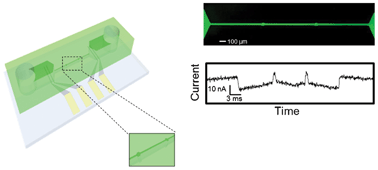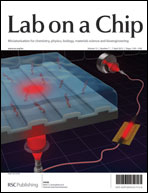Node-pore sensing: a robust, high-dynamic range method for detecting biological species†
Abstract
Resistive-pulse sensing (RPS), which is based on measuring the current pulse produced when a single particle transits a pore or channel, is an extremely versatile technique used to determine the size and concentration of cells and viruses and to detect single molecules. A major challenge to RPS is dynamic range: smaller particles in a heterogeneous sample can go undetected because of low signal-to-noise ratios (SNRs) and the fact that the pore size must be commensurate with that of the largest particles. Here, we describe a fundamentally different pore that provides an unprecedented dynamic detection range, from tens of nanometers to several microns in size, without the need for pre-sorting or


 Please wait while we load your content...
Please wait while we load your content...